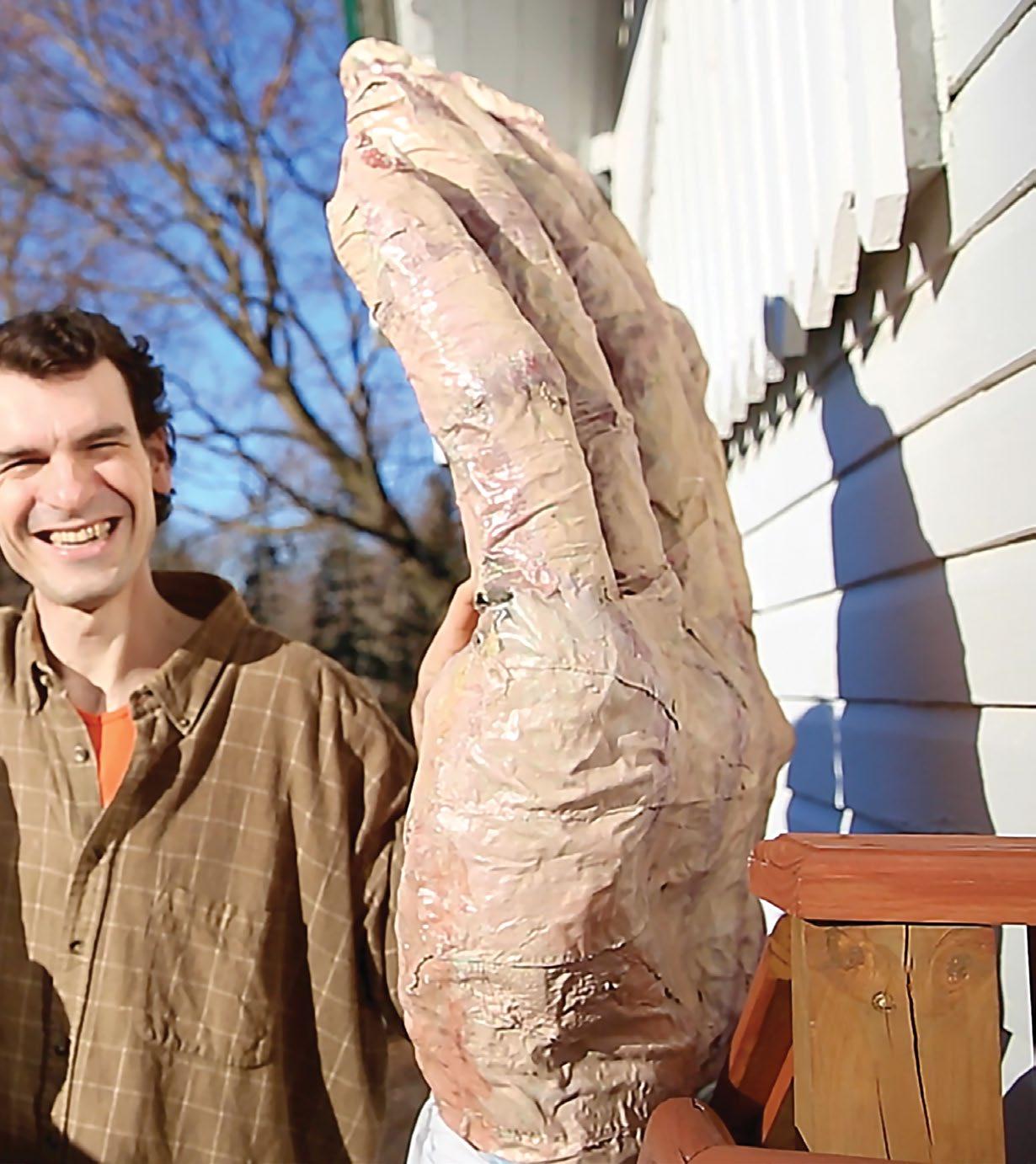
4 minute read
Evolving Science & the Task of the Natural Science Section
A report on the annual conference of the Natural Science Section at the Rudolf Steiner House in Ann Arbor, MI, from December 1–4, 2016
Aside from considering new developments in science, this year’s Natural Science Section conference focused on the task of the Section and on building an active scientific community around our work on Goethean science. Our efforts were blessed by the fact that a special constellation of key people agreed to participate in the conference. We were also inspired by memories of pioneering individuals on the other side of the threshold such as Ernst Katz, Seyhan Ege, Stephen Edelglass, and Georg Maier, and we were encouraged by the good wishes of colleagues such as Mark Riegner, Walter Goldstein, and others who were unable to attend. Those of us who have been carrying the work and attending the annual conferences of the Section over the past years felt that our focus on building the inner capacities necessary for the further evolution of science also contributed to the special quality and success of the conference.
The Rudolf Steiner House in Ann Arbor provided an ideal setting for the conference. With its welcoming, helpful staff and spaces permeated by many years of anthroposophical activity, it is well suited to a conference of up to 25 people.
On the Wednesday evening before the conference began, Andrew Linnell gave a thought-provoking talk on technology and its role in human evolution. The conference began on Thursday with efforts to approach our theme through work based on the content of the First Class. Led by Barry Lia, John Barnes, and Douglas Miller, we considered the path and inner development of the scientist, steps toward establishing a qualitative science, and Rudolf Steiner’s suggestion that “the lab bench must become an altar.” On Thursday evening, Friday and Saturday, we heard stimulating talks that were open to the public:
• Fred Amrine on beauty as a fundamental aspect of good science and “What is scientific about Spiritual Science?” (see next article)
• Craig Holdrege on overcoming the limitations of superficial abstract thought and encountering the actual beings of Nature
• Johannes Kühl on approaching the etheric through light and electricity
• Arthur Zajonc on the practice of contemplative inquiry and physics today
• and Gopi Krishna on Goethean science and Dewey Larson’s reciprocal system.
In addition, each participant reported on his or her own scientific work. Beside those already mentioned, those who presented were: Frank Fawcett and Jerry Kruse on the forthcoming book by geologist Dankmar Bosse about human and earth evolution, and on collaborative work in geology; John Petering and Judith Erb on teaching chemistry through phenomena and song (!); Jennifer Greene on water research and its application in waste water treatment; John Bowditch on bringing science and technology alive in museums; Jeremy The hall at Rudolf Steiner House, Ann Arbor, Michigan.
Strawn on spreading enthusiasm for projective geometry; and Michael Shope on designing and setting up a scientific experiment. Barry Lia presented his research on the hidden morphology of the retina in relation to behavioral specialization and the ancient notion of an etheric streaming from eye to object. Each presentation was followed by lively conversation, which also bubbled up freely over meals shared in the dining room and on invigorating walks in the nearby arboretum.
The mood of the conference was pervaded by a sense of being part of a momentous development in the evolution of modern science and an awareness that we are working at thresholds, the crossing of which will require the total engagement and transformation of our own being. Associated with this was an awareness of forming a working scientific community, which became particularly apparent toward the end of the conference when we decided to take up a study of, and contribute to a commentary on, the eighteen lectures Rudolf Steiner gave on Interdisciplinary Astronomy (CW 323), which Fred Amrine has re-translated and which will soon be published by SteinerBooks. The plan is that our next annual Science Section conference in 2017 will focus on this challenging work. We have already reserved the Rudolf Steiner House for November 9-12, 2017 for the conference. Another promising outcome of the conference was that Mark Riegner and John Petering have agreed to work together on editing a new science journal.
At the Science Section’s business meeting on Sunday morning the four members of the Section’s Steering Group—Jennifer Greene, John Barnes, Barry Lia, and Andrew Linnell—agreed to continue on, joined when needed by Judith Erb in their regular Monday morning conference calls. We were also pleased to hear that the conference had broken even financially. Thus at a time of tremendous challenges we left the conference with gratitude toward our hosts in Ann Arbor and with renewed courage and confidence in the importance of our work.
John Barnes, Jennifer Greene, Barry Lia, Andrew Linnell and Judith Erb for the Natural Science Section’s Steering Group

The Hall at Rudolf Steiner House, Ann Arbor, Michigan










